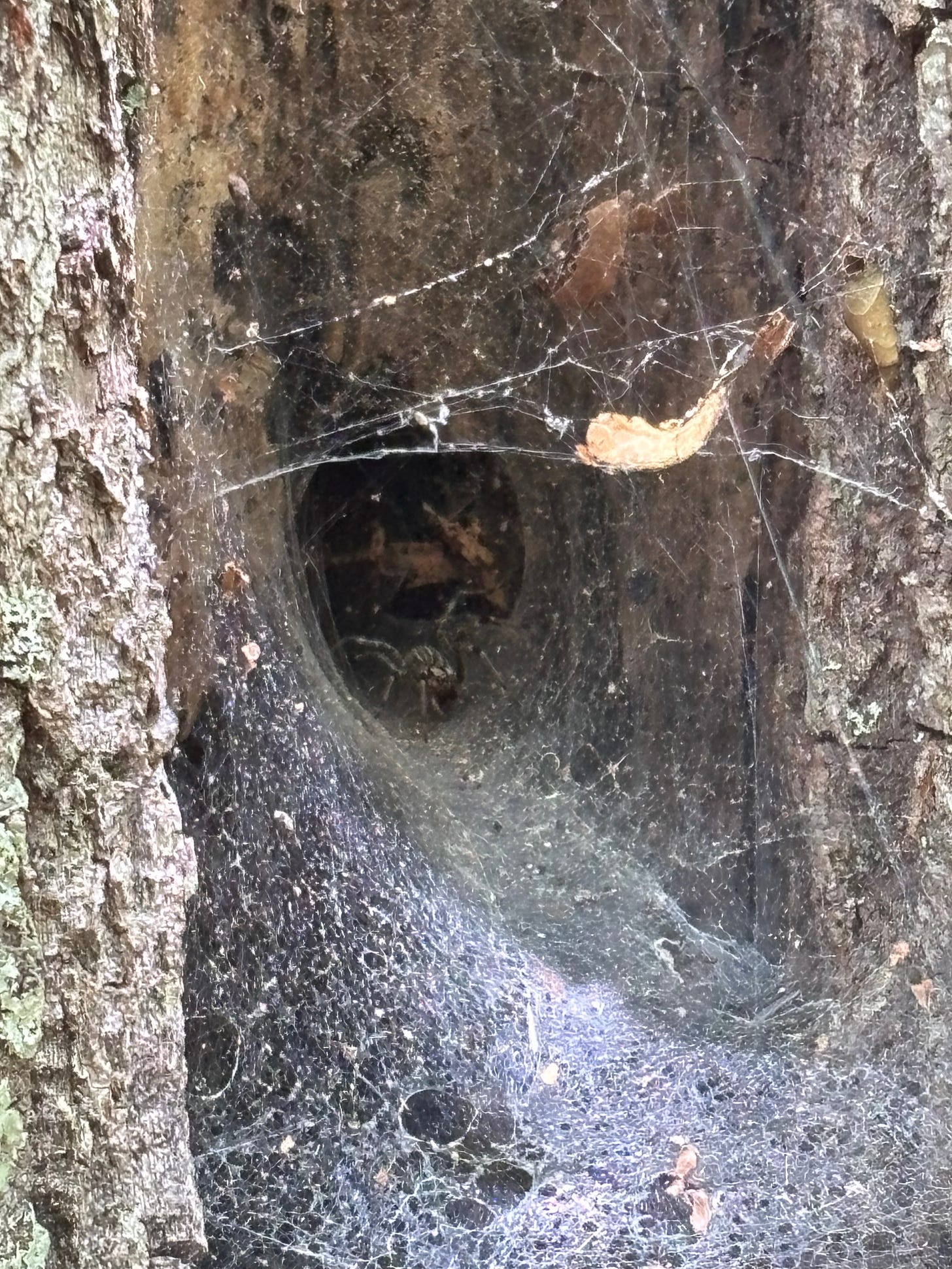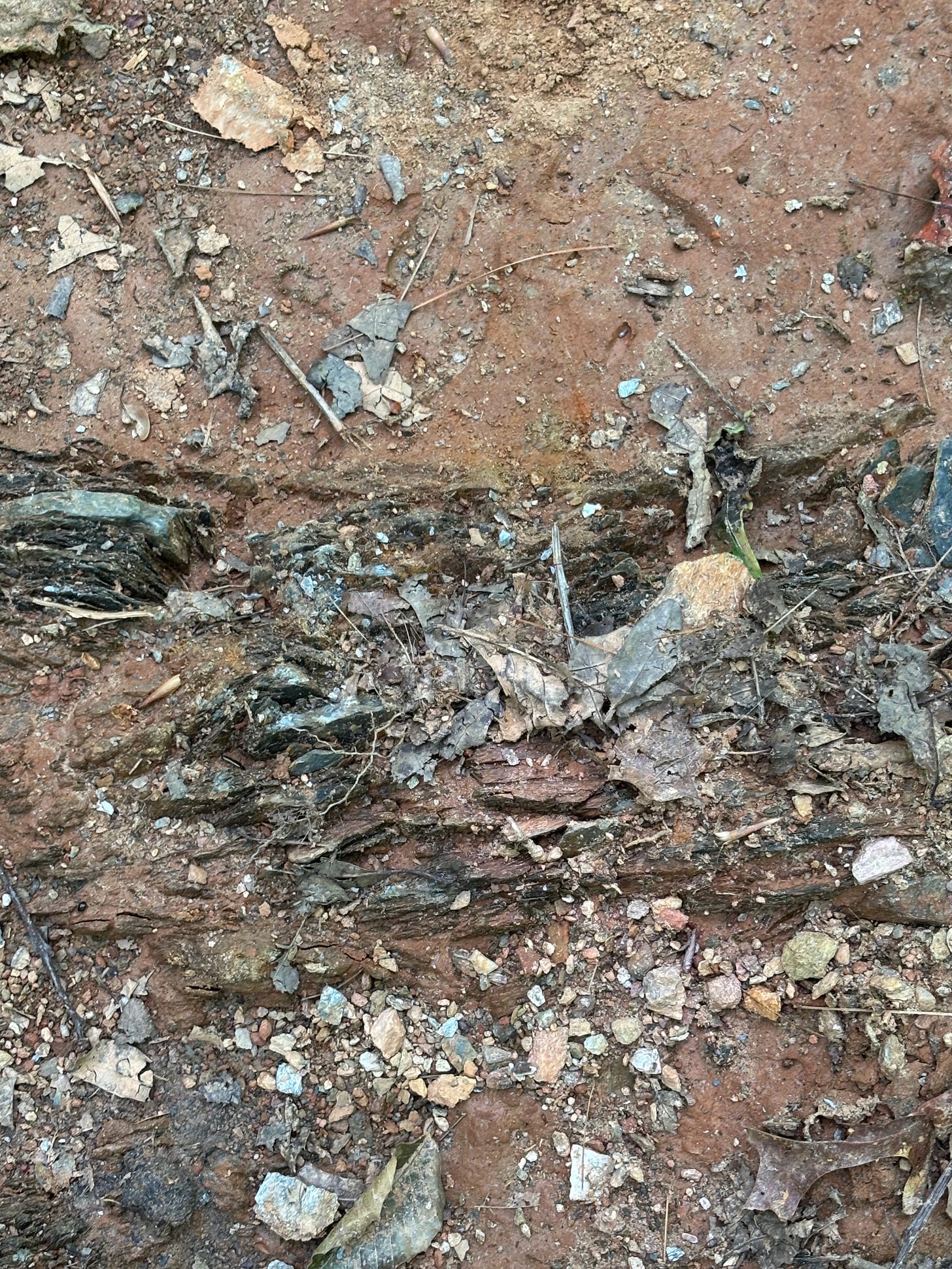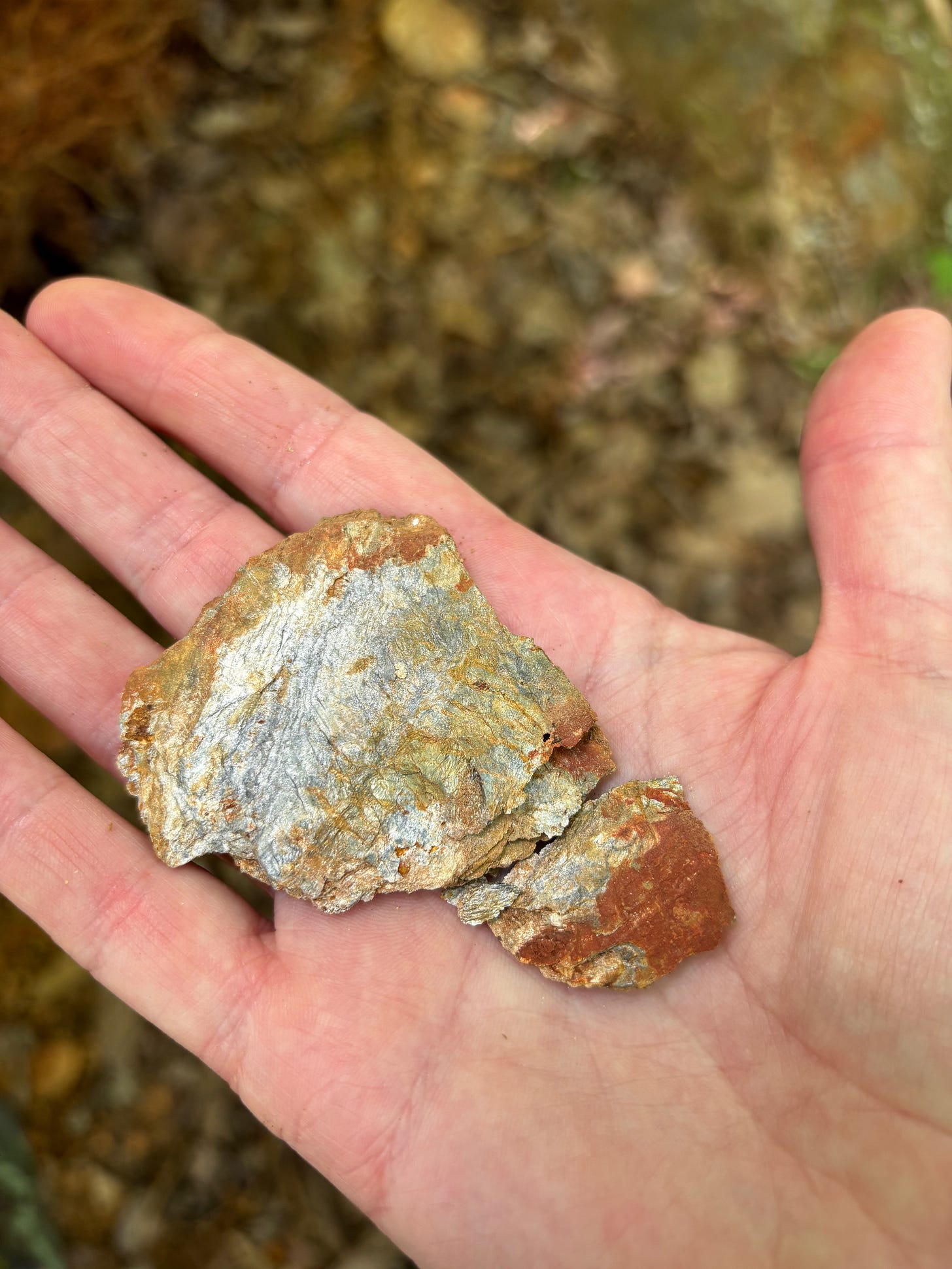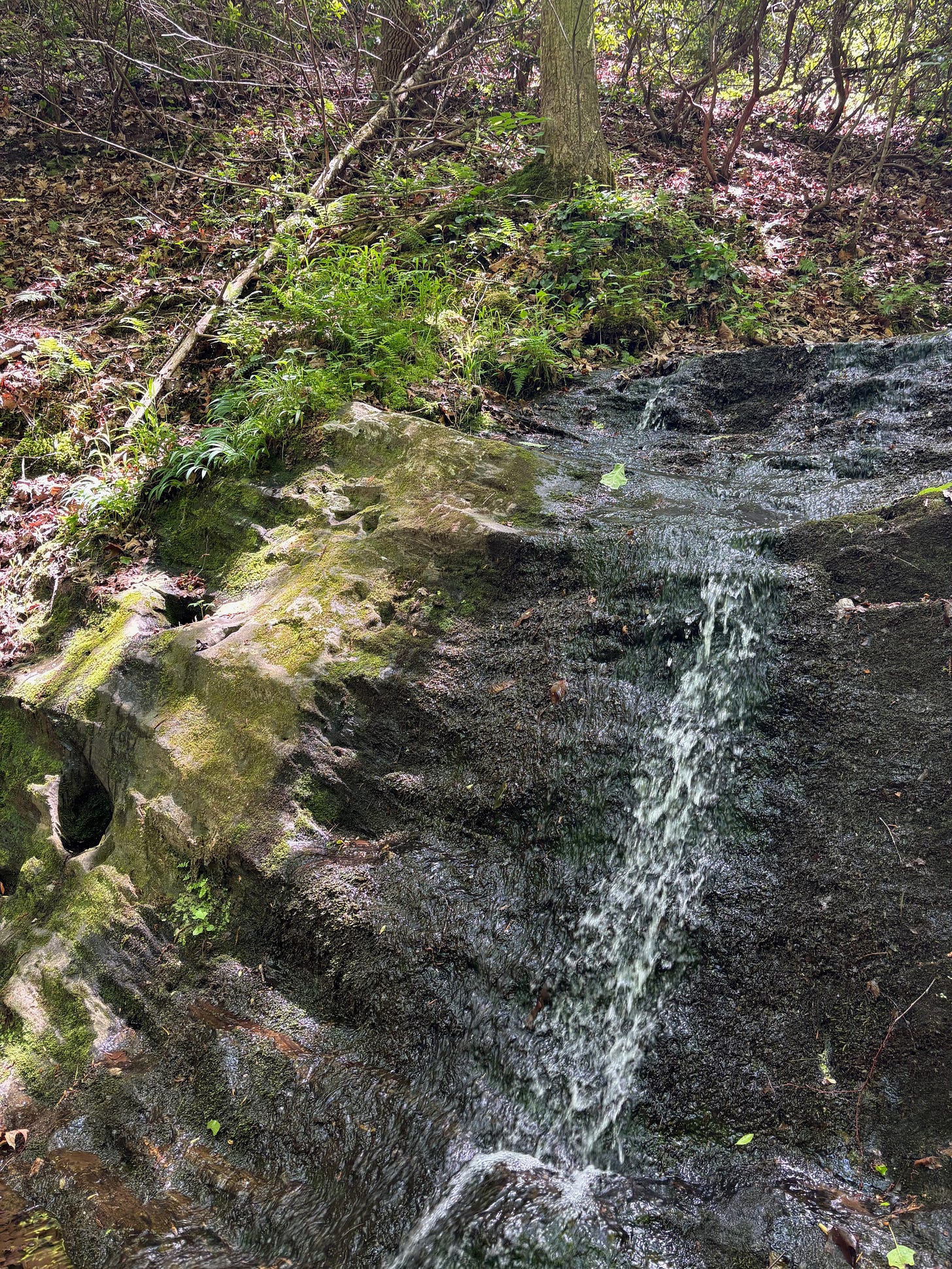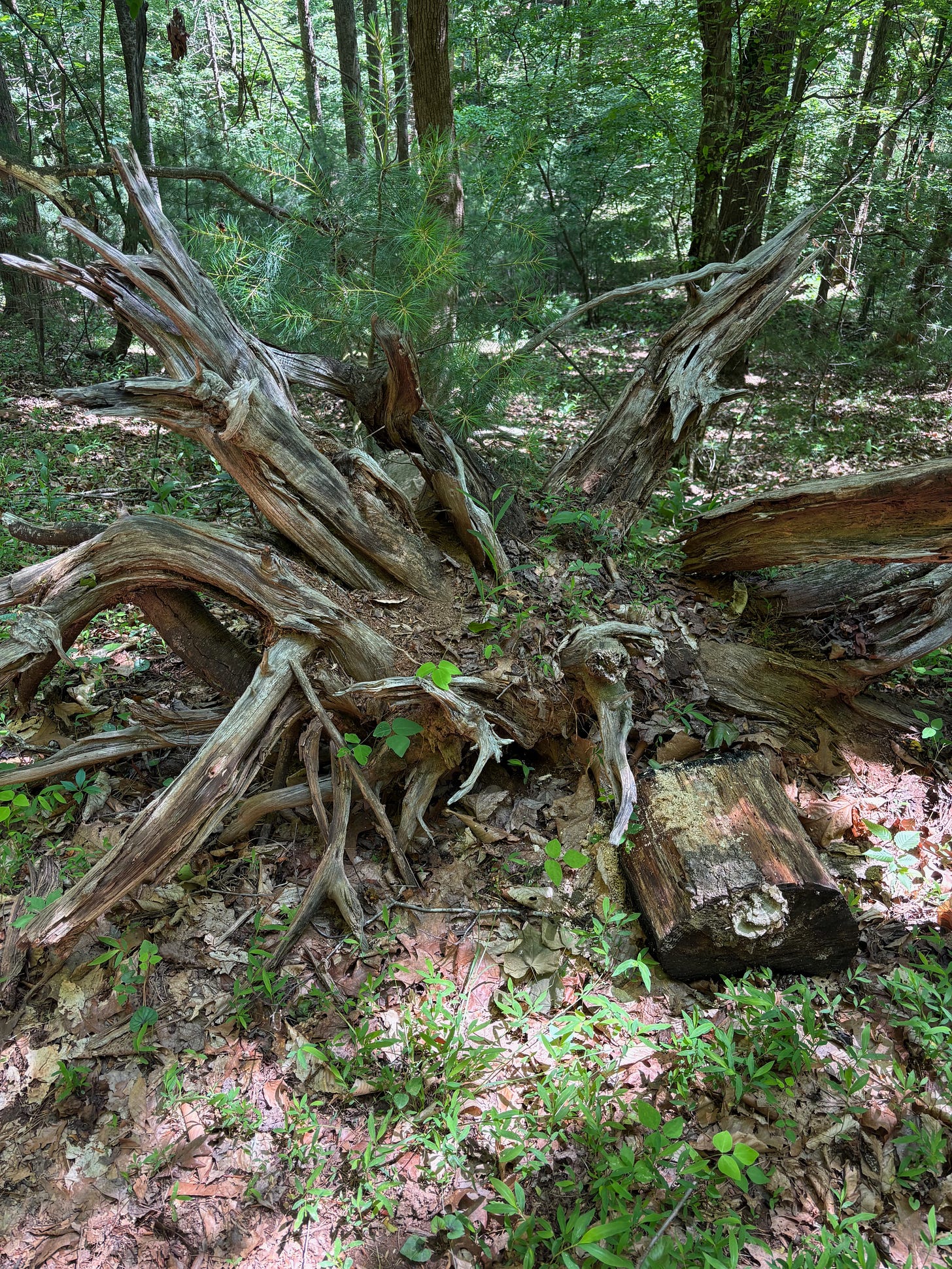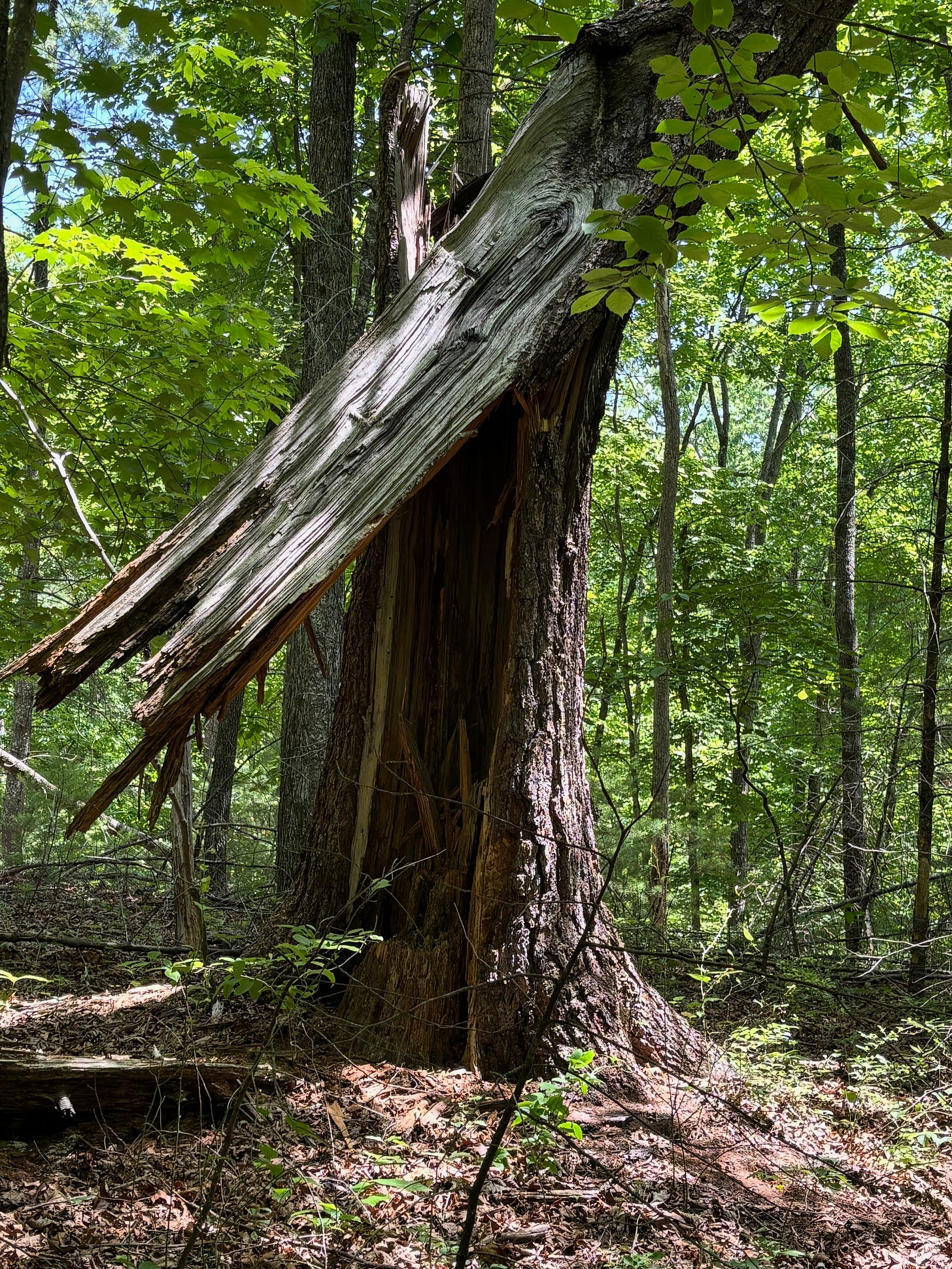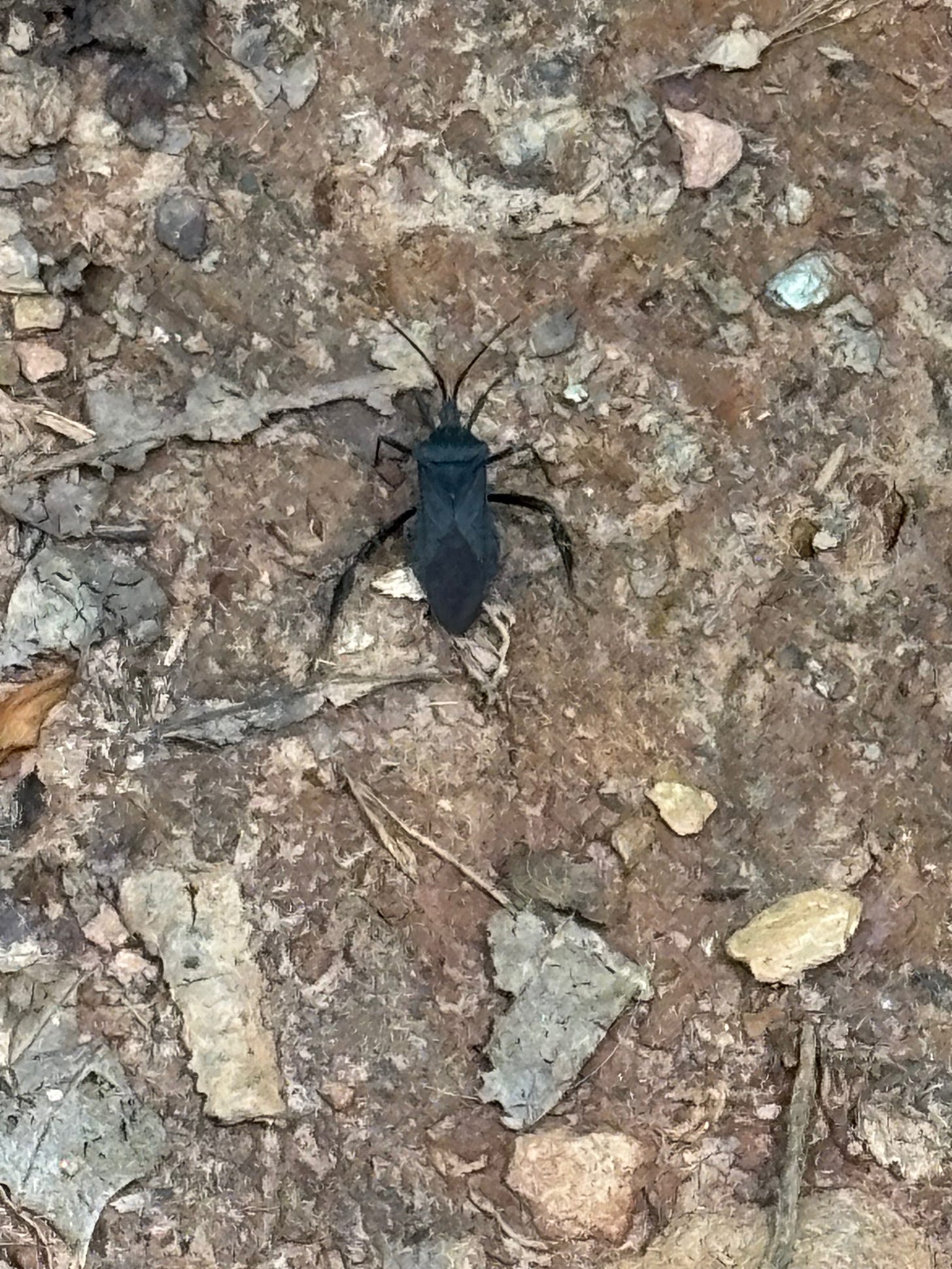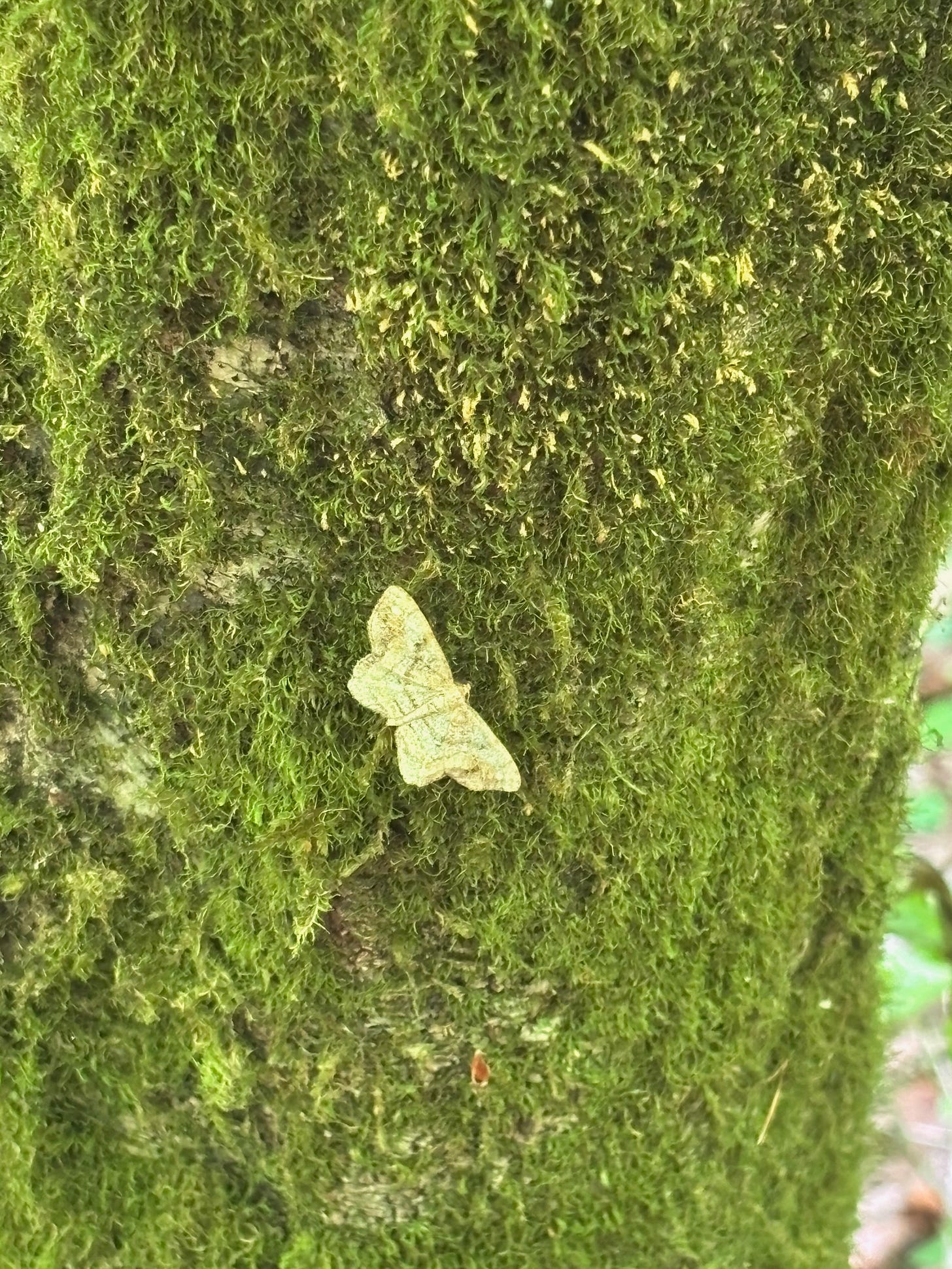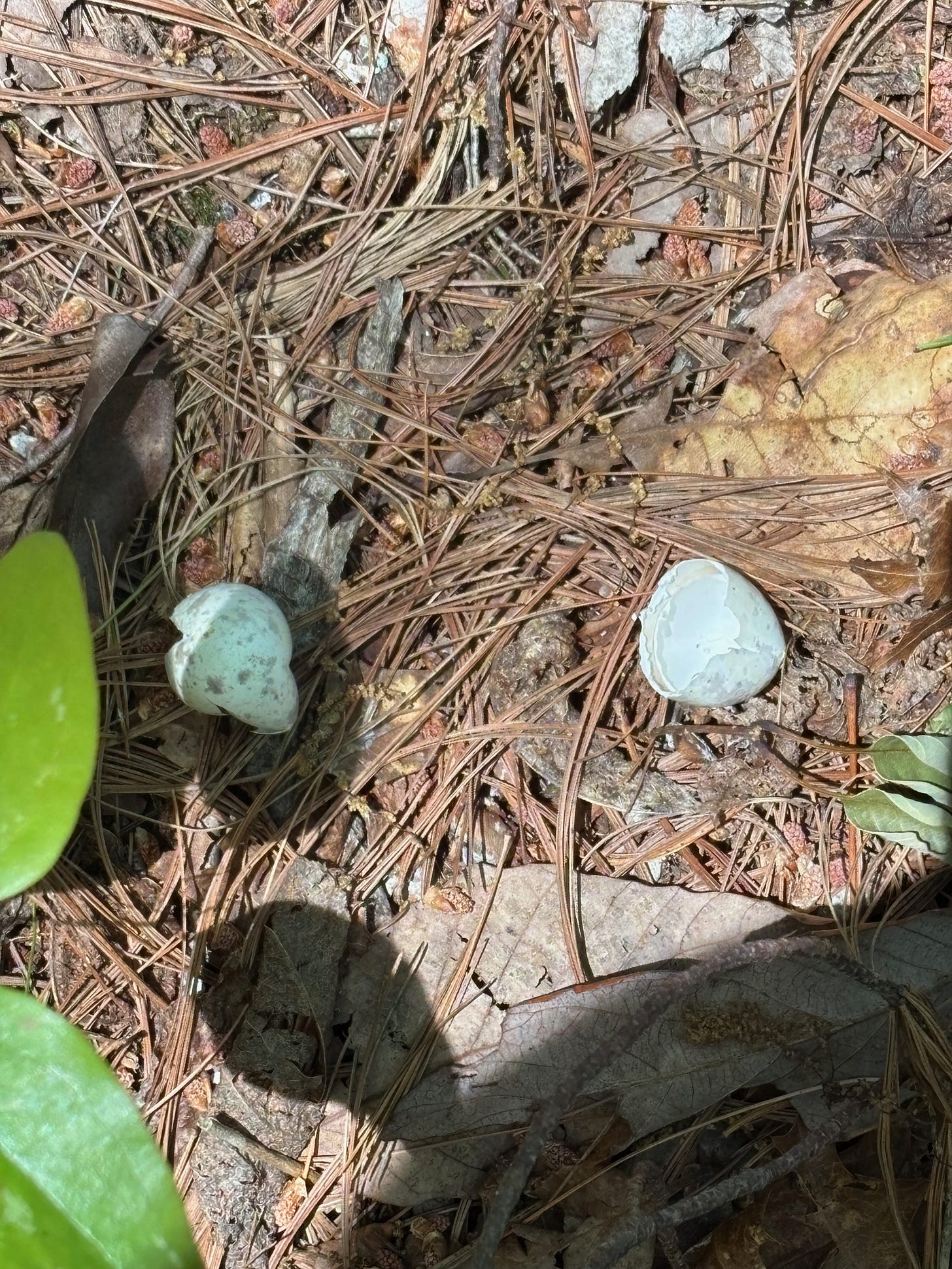I had some things to say about how long it’s been since I posted here, but you know what, let’s skip it. Let’s just say hello again, and dive right in.
*Note this is going to be a long post, so click through “view entire message” if your email provider cuts it short*
I’m going through a bunch of photos from my weekend trip to Martinsville, Virginia, and Fairy Stone State Park. I’ve had lots of adventures since I last posted here, but I so often forget to take photos when I’m out. For one thing, I’m very solidly of the generation before cell phones were ubiquitous, so it (still) isn’t a reflex for me to bring my phone out every time I see something interesting. Also, I have a tendency to get so totally immersed in whatever I’m doing I just…forget. But this weekend I made a concerted effort to take lots of pictures, which, if I’m honest, was kind of…distracting?
These are all from Fairy Stone State Park in Patrick County, Virginia. I chose one of the longer trails, accessed by a connector trail, but I ended up going in circles a couple of times because I wasn’t really paying attention to the trail markers. It was a very nice day though, and I had a backpack full of water and snacks, and there were very few people out on the trails that day.
This is a close-up of a dead tree, where it appears something has built a little nest of some sort behind the bark. The whole tree was full of holes, and the bark was peeling away. This one little pocket was about the length of my hand. I have no idea what kind of little creature made this, but look how neat and cozy those little pods look all tucked in the tree bark.
Here are a few spiderwebs. I saw a lot like this. The first two webs below (left & center) were both built on the ground, along the side bank of the trail. They’re low to the ground, spread out over the leaves and stuff, with these tightly-woven little funnels on one side. They looked so thin and delicate, except for the funnel portion, which was denser and quite sturdy looking. The photo on the right, and the enlarged image below are of the same web, built into a hollow in a dead tree. In this one, I got a brief glimpse of the web-maker. You can just make out the little greyish striped spider in the little funnel.
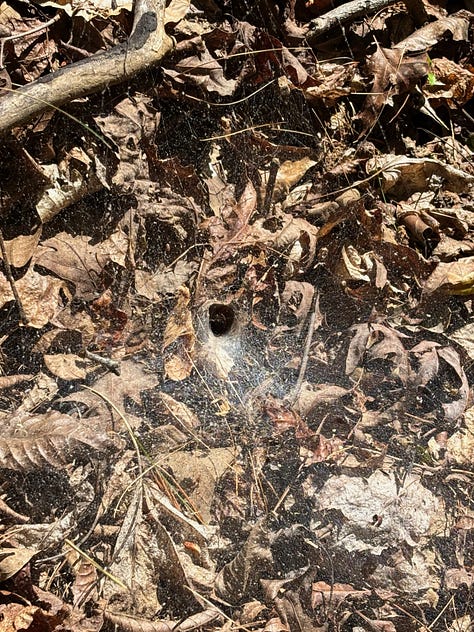
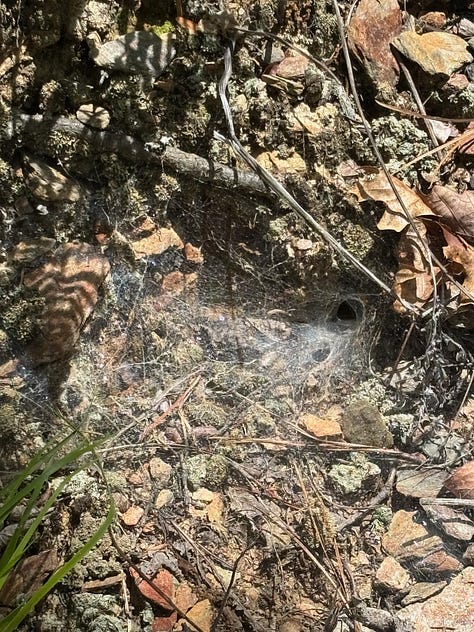

Interestingly, this web that was built in the tree appeared to be made of many more layers than the ones on the ground. It isn’t really easily discernable in the photos, but viewed up close in the sunshine it looked almost as if there were many layers of webbing, one over top the other, in a very fine stratus of webbing. I wonder if the layers are, in fact, webs of different ages rather than all constructed at once. Has this little spider been constructing and re-constructing, repairing and layering, building on top of older webs over time? Or is this one single instance of web construction, designed differently, perhaps, because of its location in a tree rather than on the ground?
A little digging on the interwebs (haha, webs) tells me this is a very common American grass spider, also called a funnel weaver, or American funnel web spider, which is harmless to humans. (Apparently there is an Australian Funnel-Web spider, which is dangerous)
As I mentioned in my post about Virginia creeper, I do not usually rush to try to find answers to questions like these. I find it quite satisfying mental exercise to just wonder a bit, and I very, very rarely look things up while I’m out adventuring.
There were some sections of the trail that had lots of this crumbly stone in layers all over the place.
Those two photos above were taken looking straight down at my feet. You can see the bands of stone layers. Below is a photo taken of the side bank of the trail.
Alongside the trail, there was a section where the side sloped way up the hillside, and there were these areas where the soil under the trees had eroded away and these huge sections of layered stone were visible right next to the trail. Notice the sideways orientation of the layers, which I found fascinating.
I think these stone layers are shale, a thin, somewhat delicate, crumbly geological precursor to slate. It was everywhere, in thick bands in all sorts of orientations. Some of it had the most amazing coloring, with a huge variety of shades, and some really interesting iridesence. What causes this variety of color? What causes that delightful sheen?
I’m not a geologist (or scientist of any sort, for that matter) so I may be wrong about what type of stone this is. Anyone out there have opinions on this?
A small waterfall, and more interesting rocks:


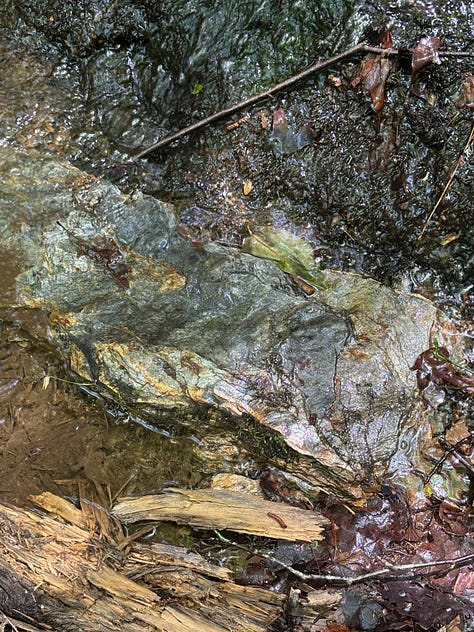
There were lots of these large rocks in the stream below the waterfall, and while they displayed very similar coloring to the crumbly shale (?) that I saw elsewhere, these rocks were hefty, thick, and very solid. Not crumbly. These look much more like slate to me - layering was still visible, but they are much more solid and stable than the delicate layers shown earlier. Again, I’m not a geologist, so if you have opinions let’s hear them!
I don’t know about you, but I love checking out the exposed roots of fallen trees. You know how sometimes when they fall over, they pull up big sections of earth with them, and a big chunk of their root system is now visible? So interesting! All this stuff that’s normally hidden from view, buried in the ground, is now open for inspection. It’s so incredibly complicated in there!
Then there’s the old ones, after the soil has washed away.
Then there was this tree, that split apart near the bottom but didn’t fall all the way over. Way up toward the top, it was resting against several other trees.
The map had several areas along the trail marked as overlook locations, but this is the only one I saw.
This one is well on its way to being too overgrown to see much, so maybe that’s what happened to the others.
Mountain Laurel is in bloom here now (although it’s getting toward the end of the bloom season), and they are so beautiful when they’re in full bloom. Most of the ones I saw were white, but along one particular section there were several bunches of pink-tinged flowers.
All on the same shrub, there might be several clusters of nothing but white flowers, then a few clusters of pale pink and pink-edged, and pink-spotted. My initial guess is that the acidity of the soil may be at work here, much like soil acidity can affect hydrangea colors. Whatever the cause, the variety was quite lovely and definitely interesting.
A Google search tells me this little bug is Acanthocephala terminalis, which is a species of leaf-footed bug. Its legs and feet are all kind of barbed and spiky. I almost stepped on this one, as it was right in the middle of the trail. Once I got a photo (it’s a little grainy, because I used the stupid zoom on the phone camera) I nudged it gently off the trail.
A teeny tiny little moth (about the size of a nickel) resting on a tree that was absolutely covered with this soft, hairy moss. The whole tree!
Is this an Idaea obfusaria?
Eggshells, hopefully from a successful hatching. The eggs were a delicate cream color, with some greyish speckling. Any guesses on what type of bird this was from?
Let’s end with this little video of a pair of pileated woodpeckers. I couldn’t get any closer, unfortunately, because they were definitely aware of my presence. Just before I shot this video, the one on the fallen tree was calling - if you don’t know what a pileated woodpecker’s call sounds like, please do yourself a favor and look it up. It is absolutely delightful, and I dearly wanted to get a recording of this one. (If you listen very closely to this video you may hear me whispering “come on make some noise” - that microphone is crazy sensitive!). Alas it was not to be; this pair took off shortly after I stopped recording.
Well folks, that’s all for now, just a few highlights from my day on the trails. As always, thanks for joining in on my adventures again!
See you next time!







